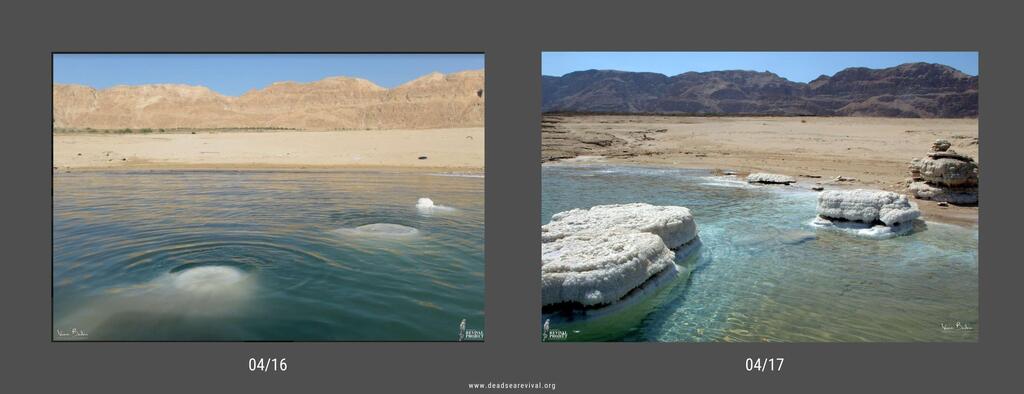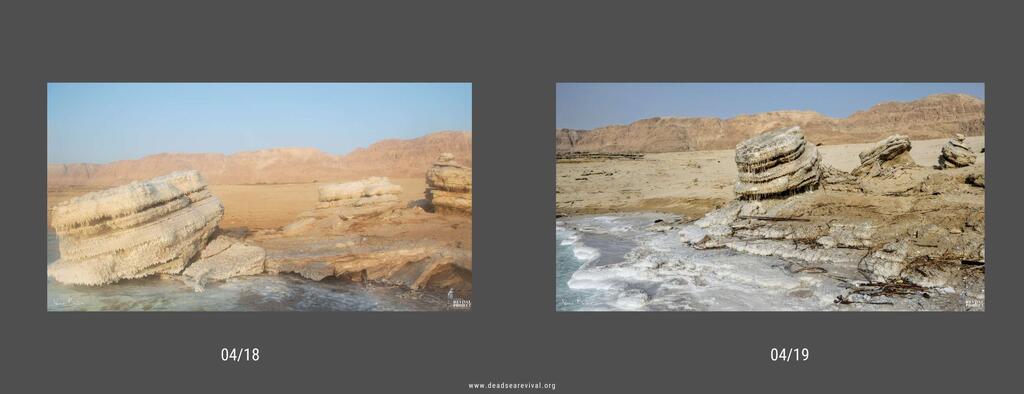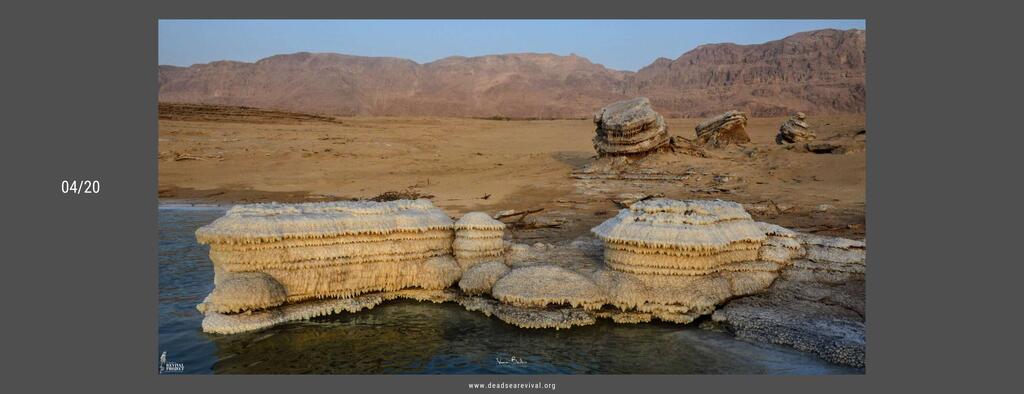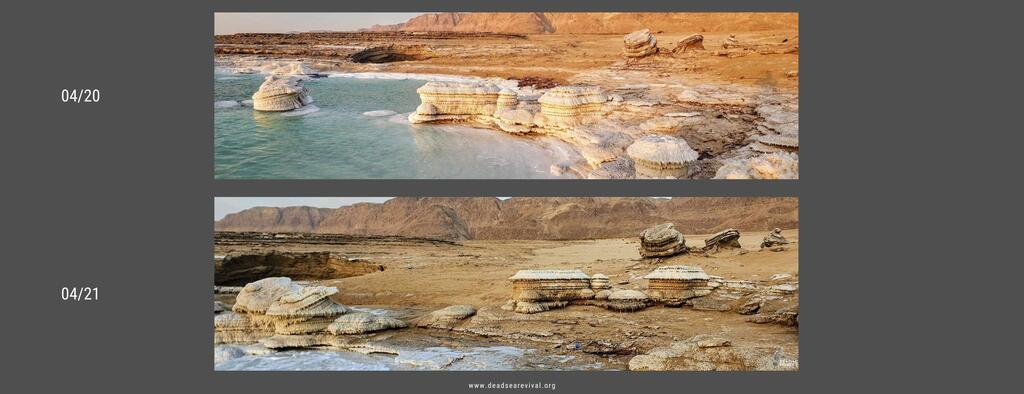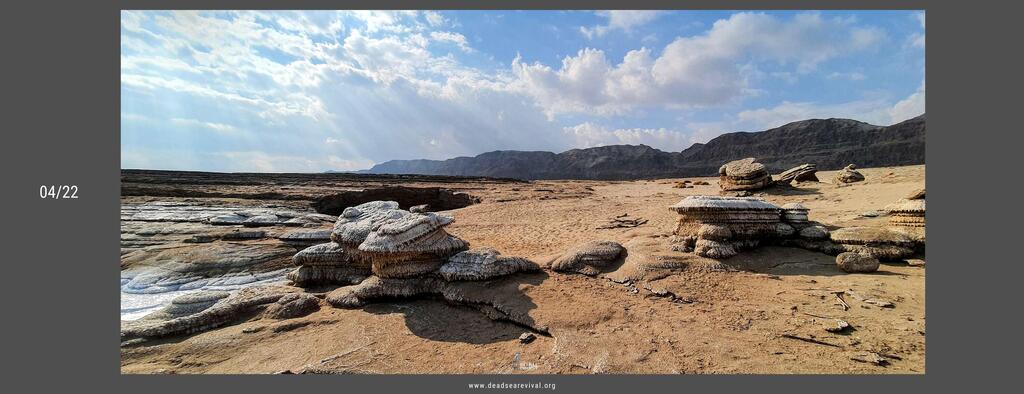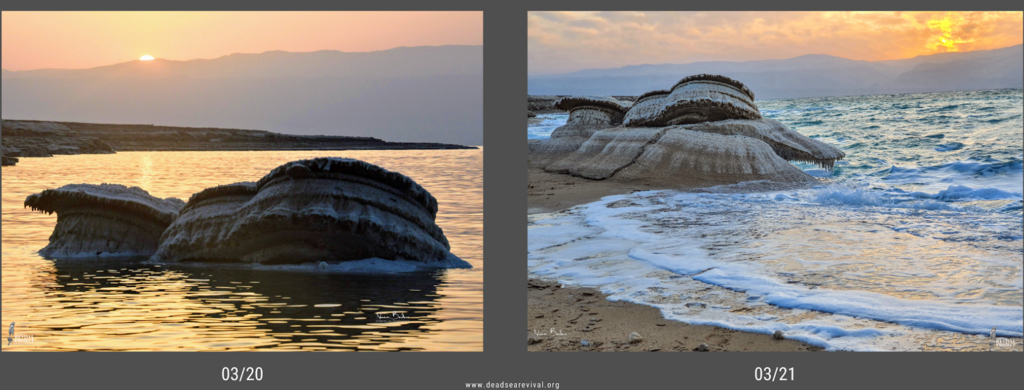Visual and environmental artist Noam Badin shot various locations in the Dead Sea over a period of seven years to illustrate the extreme changes that the area is undergoing.
Other stories:
Recently, the Arad Culture Center in collaboration with the Dead Sea Revival Project began displaying an exhibition of Badin’s photos entitled "Water Levels".
The exhibition is free to the public and will be displayed in the coming months at the Arad Culture Center in the southern Israeli city. Visitors are invited to view the photos and see the significant changes taking place in the Dead Sea area.
"Today, 98% of the natural shores of the northern Dead Sea are inaccessible to the public, due to the 7,000 sinkholes along the coast. The only way to explore and experience the wonders of the Dead Sea up close is by boat,” Badin told Ynet.
“After seven years of exploring and documenting the Dead Sea by sea, I present a collection of time-lapse photographs that illustrate environmental changes. By using a boat to reach the same points each time, I was able to document the receding sea levels. It is estimated that the Dead Sea loses the equal of 600 Olympic-sized swimming pools daily."
According to research conducted by the Geological Survey of Israel, the Dead Sea water level has decreased by over 30 meters (100 feet) in the past four decades. The rate of decline has increased over time, standing at 0.7 meters (2.3 feet) per year in the 1970s-80s and currently standing at 1.2 meters (4 feet) per annum, with an acceleration rate of approximately 2.2 centimeters (1 inch) per year.
The decline is primarily due to Israel, Jordan, and Syria diverting the water sources that feed into the body of water for drinking and irrigation purposes. This includes the construction of the Degania Dam in 1932 and other dams built on the eastern plateaus of the sea, expanding the capacity of the water pumping from the Sea of Galilee, diverting water from the Yarmouk River to the Jordan Valley, and pumping water from the Jordan River sources in Lebanon.
The decline of the Dead Sea has many environmental repercussions, the most notable of which is the appearance of thousands of sinkholes, causing the closure of many beaches and the abandonment of infrastructure, agriculture, and tourism along its northern shores.


